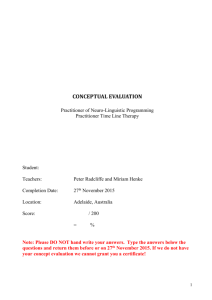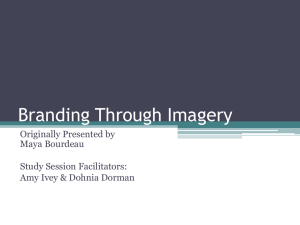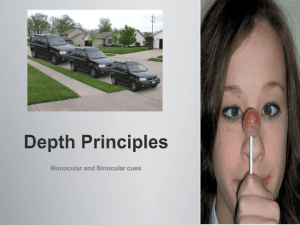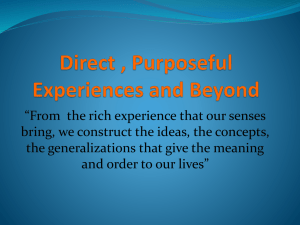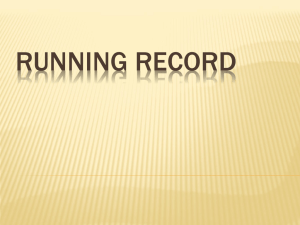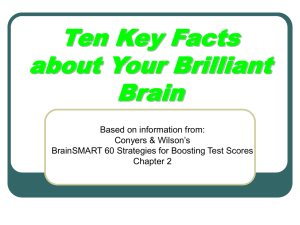NLP & Submodalities
advertisement
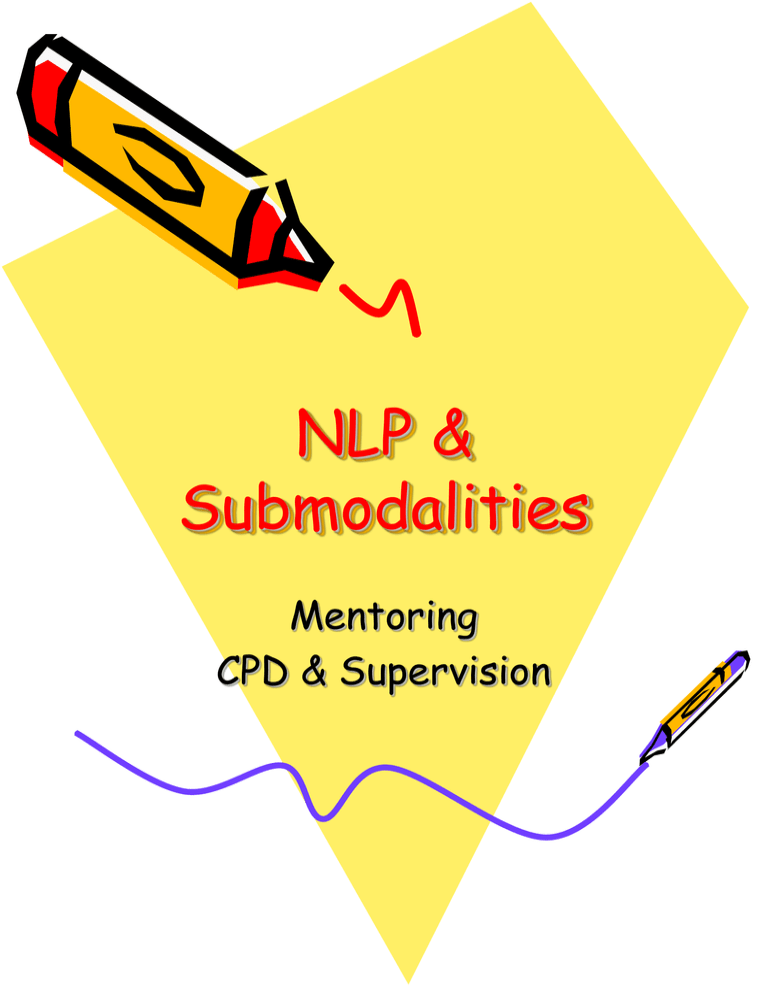
NLP & Submodalities Mentoring CPD & Supervision NLP • What is NLP – N Neurology The Mind & how we think – L Linguistics How we use language & how it affects us – P Programming How we sequence out actions to achieve our goals Presumptions of NLP • People respond to their experiences rather than reality itself. • Having a choice is better than not having a choice. • People make the best choice they can at the time. • People work perfectly. • All actions have a purpose. Presumptions of NLP • All behaviours have a positive intent. • The unconscious mind balances the conscious; its not malicious. • The meaning of communication is not simply what we intend, but also the response we get. • We already have all the resources we need. Presumptions of NLP • Mind and body form a system. They are different expressions of the same person. • We process all information through our senses. • Modelling successful performance leads to excellence. • If you want to understand, act. Presumptions & Sub Modalities • We process all information through our senses. – NLP is based on how we use our senses. We pay attention to the outside world, and process the information it provides, through our five senses • Mind and body form a system. – How we process information affects how we act and how we act informs the way we process information. The Senses & Sub Modalities • We have five senses. – – – – – Visual Auditory Kinesthetic Olfactory Gustatory Seeing Hearing Feeling Smelling Tasting • The first three senses are the main senses and are in constant use. The latter two senses are used less often. Representational Systems • Just as we hear, taste, touch and smell the outside world, we recreate create those sense sensations in our mind. – The Kinesthetic System: Made up of our internal and external feelings of touch and bodily awareness. It includes our sense of balance, our emotion – Some systems believe that Gustatory and Olfactory are part of the kinesthetic system Representational Systems – Visual System: Creating internal pictures, visualise, daydream fantasize and imagine – Auditory System: This is a mixture of sounds and words. Creating music in your head, using your internal voice to coach you or rehearing the voices of people that you know. Representational Systems – Olfactory System: Remembered and created smells – Gustatory System: Remembered and created tastes Cues to preferred Systems: Language • Our representational system often leak into our language. • To make communication easier with people who have different preferred representational styles to you by ‘translating’ – Taking an idea and expressing it in different representational systems. Sensory Language • Visual Predicates – Look, picture, imagination, insight, scene, blank, visualisation, perspective, shine, reflect, clarify, examine, eye, focus, forsee, illusion, notice, outlook, preview, see, show, survey, vision, watch, reveal, hazy, dark, appearance, brilliant, colourful, dim, glimpse, highlight, illustrate, insight, obscure, overshadow, overview, sparkle, spotlight, vivid, mirror Sensory Language • Auditory Predicates – Say accent rhythm loud tone resonate sound monotonous deaf ask auditable pitch clear discuss proclaim cry remark listen ring shout sigh squeak speechless click croak vocal whisper tell silence dissonant hum hush mute harmonious shrill quiet dumb question rumble comment call melodious tone whine harmony deaf tune musical acoustic buzz cackle dialogue echo growl Sensory Language • Kinesthetic Predicates – Touch handle balance break cold feel firm grab contact grasp push rub hard hit tickle tight solid hot jump pressure run warm rough tackle seize push sharp pressure sensitive stress soft sticky stuck tap tangible tension vibrate touch walk concrete gentle grasp hold scrape solid suffer heavy smooth Sensory Language • Olfactory Predicates – Scented smelly stale fishy fragrant, nosey smoky fresh musky • Gustatory Predicates – Sour bitter salty juicy sweet spicy toothsome mouthwatering minty nausea nauseating sugary gall succulent chew chewy Non Sensory Language • Unspecific words – Decide think remember know mediate recognise attend understand evaluate process decided learn motivate change conscious consider assume choose outcome goals model programme resource thing theory idea sequence result logic memory future past present condition connection competence consequence Cues to Preferred Systems: Language • Exercise One • Work with a colleague, take 5 min each to talk about what you did last night. – Listen to your colleague, noting what language they use most often. – What system do you think they prefer? Cues to Preferred Systems: Interests • Interests: – Visual preference: drawing, interior design, drawing, fashion, the visual arts, television and film. – Auditory preference: language, writing, drama, music, training and lecturing – Kinesthetic preference: Sports, gymnastics, athletics, cooking, crafts, chocolatiers and perfumers Cues to Preferred Systems: Other • Body language, voice tone, breathing patterns, voice tone and eye movements – Visual: Defocused eyes, or looking up. Rapid speech, high and clear tone. High, shallow breathing in the top part of the chest. Tense body posture, often with neck extension. – Auditory: Eyes focus on the midline. Medium pace speech with melodious tone (often with an underlying rhythm. Cues to Preferred Systems Breathing in the middle part of the chest cavity. Rhythmic body movements. Head may be tilted to one side, as if listening on the telephone. – Kinesthetic: Eye movements are often downwards and to the right. Voice tone is often is low or deep, speech is slow and soft often with pauses. Breathing is deep and from the abdomen. Relaxed body posture and might make gestures to the abdomen Cues to Preferred System: Other • Exercise Two • Having seen my presentation style – – – – – my body movements my body posture my voice my speech patterns my breathing patterns • What does this tell you about my preferred system? Cues to Preferred Systems: Eye Movements Constructing feelings Eye Accessing Cues • Exercise One – Working in pairs ask each other some of the questions below and watch their eye movement WHILE THEY ARE THINKING. Do their eyes move where the diagram predicts? • What colour is your front door? (v) • What is it like to bite into an orange? (g) • Can you hear your favourite piece of music in your head? (a) Eye Accessing Cues • What does it feel like to be happy? (k) • What is it like to feel wool next to your skin? (k) • Imagine a purple triangle in a red square. (v) • What would a chainsaw sound like when cutting through corrugated iron? (a) • What would your bedroom look like with spotted wallpaper? (v) • Imagine the smell of freshly cooked bread (o) • Which of your friends has the longest hair? (v) Eye Accessing Cues • Now ask your co-worker to ‘remember your last holiday’ – Where do their eyes move? • This should tell you something about your coworker’s preferred style. What does it tell you?


